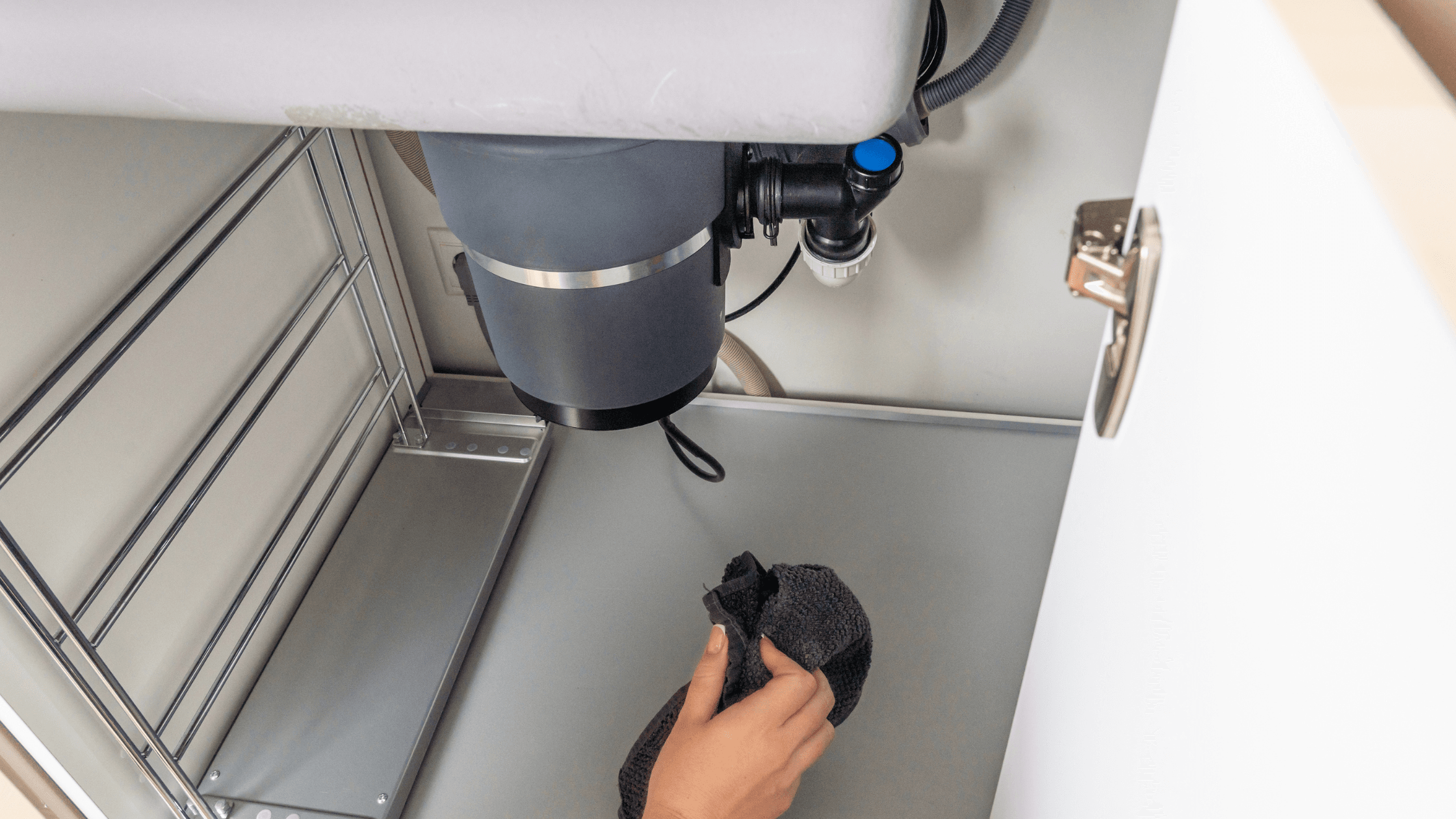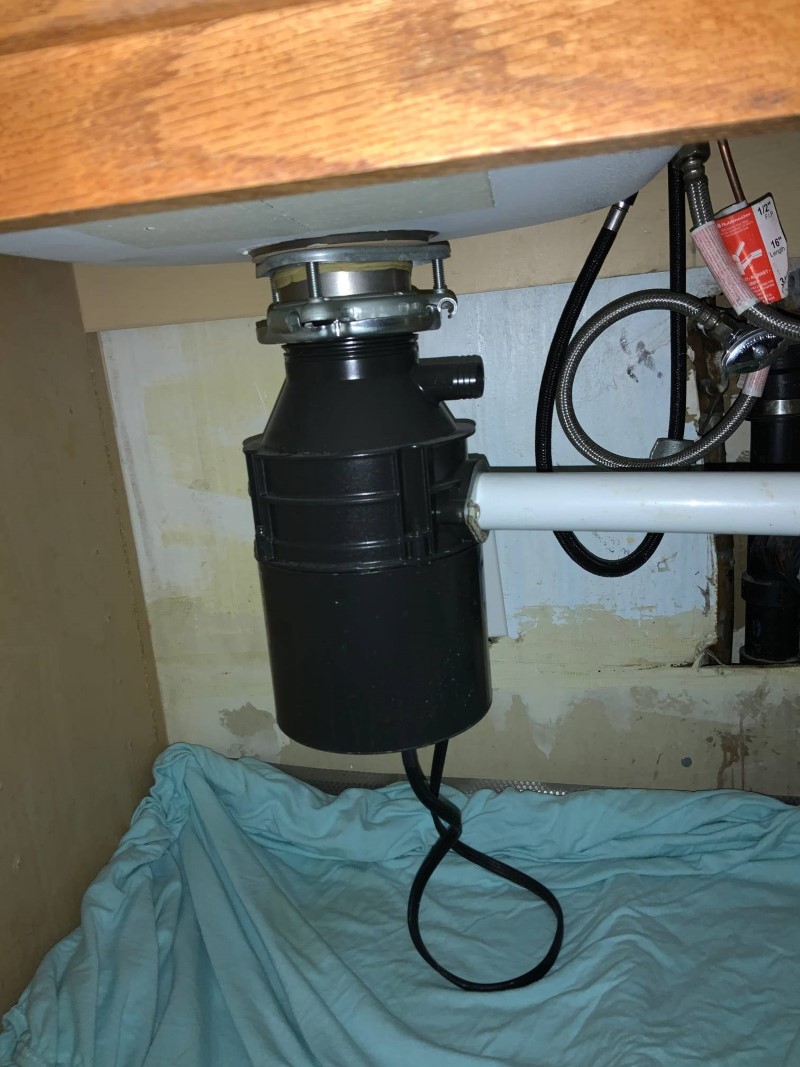Our Guide to Resolving a Leak in Your Garbage Disposal
Our Guide to Resolving a Leak in Your Garbage Disposal
Blog Article
The article author is making a few great observations regarding Tips on Fixing a Leaking Garbage Disposal as a whole in the article further down.

Waste disposal unit are important cooking area appliances that aid in getting rid of food waste effectively. Nevertheless, a dripping waste disposal unit can be a discouraging and untidy issue to take care of. The good news is, several leaks can be repaired conveniently with a couple of simple actions. In this write-up, we will review how to take care of a dripping garbage disposal successfully.
Introduction
Garbage disposals are installed under cooking area sinks and are developed to shred food waste right into smaller items, allowing it to pass through the plumbing system conveniently. While these devices are typically trustworthy, leakages can happen over time due to wear and tear, loose connections, or damages to the unit.
Common Root Causes Of Leaks in Waste Disposals
Worn Seals and Gaskets
Seals and gaskets play a vital role in preventing water from dripping out of the garbage disposal. Over time, these elements can deteriorate, leading to leakages around the disposal unit.
Loose Connections
The links between the waste disposal unit and the plumbing system can become loose gradually, triggering water to leak out during operation.
Fractures or Holes in the Disposal Unit
Physical damage to the garbage disposal, such as fractures or holes in the real estate, can also cause leaks.
Recognizing the Source of the Leak
Prior to trying to take care of a leaking garbage disposal, it is vital to determine the resource of the leak. This can commonly be done through aesthetic inspection or by performing basic examinations.
Visual Examination
Evaluate the waste disposal unit unit meticulously for any type of indications of water leak. Pay very close attention to locations around seals, gaskets, and link points.
Examining for Leaks
One method to examine for leakages is by running water via the disposal system and looking for any kind of visible signs of leakage.
Devices and Products Needed for Taking Care Of a Dripping Waste Disposal Unit
Prior to starting the repair service procedure, collect the required devices and products, consisting of a screwdriver, flexible wrench, plumbing technician's putty, replacement seals or gaskets, and epoxy or patching material for repairing cracks or openings.
Step-by-Step Guide to Taking Care Of a Leaking Garbage Disposal
Shut off the Power
Before trying any kind of fixings, ensure that the power to the waste disposal unit system is switched off to avoid the risk of electrical shock.
Situate the Leak
Identify the specific area of the leak and establish the reason.
Tighten Connections
Utilize a wrench to tighten up any loose connections between the disposal device and the plumbing system.
Change Seals or Gaskets
If the leakage is due to worn seals or gaskets, eliminate the old parts and replace them with new ones.
Patching Cracks or Holes
For cracks or openings in the disposal device, usage epoxy or an ideal patching product to secure the damaged location.
Examining the Garbage Disposal After Repair
Once the repair work is full, evaluate the garbage disposal by running water via it to make certain that the leakage has actually been fixed.
Preventive Upkeep Tips to Avoid Future Leaks
To prevent future leakages, it is necessary to carry out regular maintenance on your garbage disposal. This consists of keeping it clean, avoiding putting non-food things or hard things down the disposal, and occasionally looking for leakages or various other concerns.
Verdict
To conclude, taking care of a dripping waste disposal unit is a fairly uncomplicated procedure that can be finished with basic tools and products. By following the actions described in this article and practicing preventive maintenance, you can maintain your garbage disposal in good working condition and stay clear of expensive repair work in the future.
What to Do About a Leaking Garbage Disposal
A leaking garbage disposal often goes unnoticed until you confront a sopping cabinet, a foul-smelling puddle, or an audible drip-drip-drip from the unit. The fix can be frustrating, too, because the leak can stem from a number of components in the system. Fortunately, with a little sleuthing, you can zero in on the leak and—depending on the exact location—stop the icky oozing and repair the component that caused it. Worst case scenario, if it turns out that the garbage disposal must be replaced, installing a new one is a reasonable do-it-yourself task for those with basic plumbing skills. Read on to keep the cash you’d otherwise hand over to a pro.
Prepare to find the leak
Prior to testing the garbage disposal for leaks, unplug it at the wall outlet and turn off the power from the breaker box to prevent electrical shock. Then insert a watertight sink stopper into your sink drain and wipe the unit dry with a clean cloth. In any handy container, mix a few drops of food coloring into a few cups of water, and pour the dyed water onto the sink stopper to help you locate the leak.
Investigate the source
the top, where the disposal meets the sink drain the side, where the dishwasher hose or main drain pipe connects to the disposal or the bottom of the unit Inspect each of these locations while gliding a light-colored rag over the unit; the dyed water will readily show on the rag and reveal the location of the leak. If a leak isn’t immediately apparent, remove the sink stopper and pour a few more cups of dyed water down the sink drain, then check for leaks again. Leaks near the top of the unit are more likely to show themselves while the sink is plugged, while side and bottom leaks are more noticeable while the sink is unplugged.
The metal sink flange that sits directly inside the sink drain is typically sealed around the top with plumber’s putty (a clay-like sealant) and then secured from under the sink with bolts. If the plumber’s putty deteriorates, or the bolts loosen, the flange can no longer form a watertight seal between the sink drain and the disposal—which could cause a leak at the top of the unit.
To reseal the leaky flange, you must first detach the garbage disposal. Start by loosening the screws securing the main drain pipe to the disposal, then loosen the screws in the metal clamp securing the dishwasher hose to the disposal and detach the drain pipe and dishwasher hose from the disposal. Loosen the screws in the mounting ring that connects the disposal to the metal mounting assembly beneath the sink, then pull down the disposal and carefully set it on a clean, dry surface. Loosen the bolts in the mounting assembly with a wrench, then pull down the mounting assembly and set it near the disposal.

I ran across that piece on Why Is while scouting around the internet. Enjoyed our review? Please share it. Help someone else locate it. I recognize the value of reading our article about Why Is My Garbage Disposal Leaking From the Bottom?.
Additional Resources Report this page